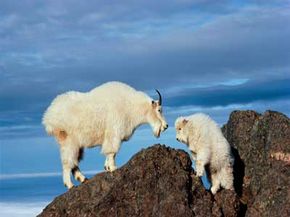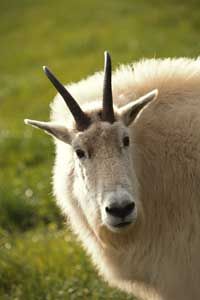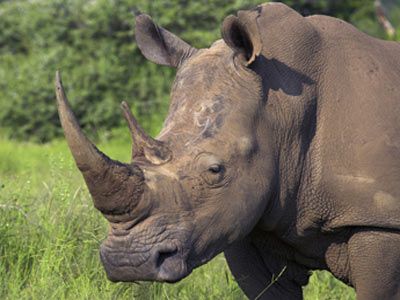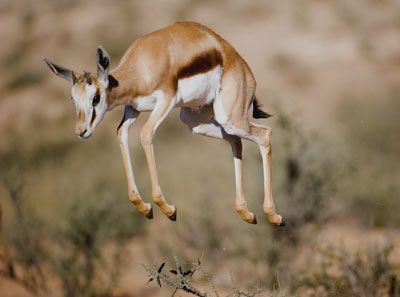Humans have a peculiar knack for naming animals based on their doppelgangers instead of their biology. Take sea horses, for instance. These bizarre fish haven't a hoof or mane to speak of. But their angular, elongated faces resemble their equine namesakes. You'll find similar misnomers for other animals, such as koala bears, Komodo dragons and mountain goats.
Mountain goats sport the woolly coats, cloven feet and horns comparable to those on true goats (members of the goat family). Males and females are even referred to as billies and nannies, respectively. But in the same way that mountain lions aren't lions at all, mountain goats aren't classified in the same group of species as true goats. And understanding the differences between those three physical traits (coat, hooves and horns) tells us a lot about how exactly the mountain goat species stands out.
Advertisement
The most obvious distinction between mountain goats and true goats is habitat. Between 40,000 and 100,000 mountain goats dwell in North America, residing among mountain peaks and crags from the northern Rockies to south central Alaska [source: Festa-Bianchet and Cote]. Their high-altitude homes call for thicker, shaggier fur than their domesticated counterparts. Two types of woolly fur cover and insulate mountain goats from the cold. A shorter coat of inner fur sits close to their skin. Guard hairs, which might extend up to 8 inches (20 centimeters), then create their shaggy appearance. Those guard hairs have a hollow structure, which traps frosty air before it can penetrate the skin [source: Chadwick].
In order to survive such precarious terrain, mountain goats have specialized hooves suited for climbing as well as descending treacherous slopes. Mountain goats have split hooves that they can spread out or contract for stability. Rubbery padding covering the bottoms of their hooves provides additional traction. This anatomical feature serves as an important survival tool since the landscape is a mountain goat's most pertinent threat. Mountain goat predators such as cougars or bald eagles may steal into their lofty territory, but more die from falling due to snowdrifts, avalanches and rock slides [source: Burton and Burton].
Yet the mountain goats' crowning features -- two pointy horns -- separate them genetically the most from true goats.
Advertisement




